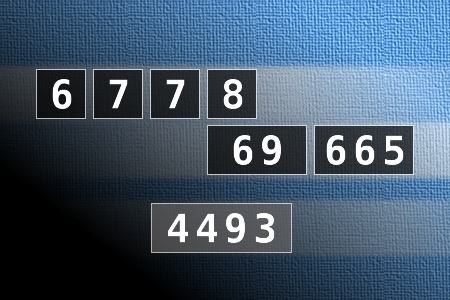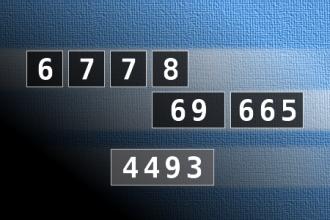Calculate the number 4493
NUMBERMANIA: Calculate the number 4493 using numbers [6, 7, 7, 8, 69, 665] and basic arithmetic operations (+, -, *, /). Each of the numbers can be used only once.Correct answers: 2
#brainteasers #math #numbermania


